OddCameras.com
Konica / Revue Auto-Reflex
The Konica Auto-Reflex, released in 1965 by Konishiroku Photo Industry Co. (since 1987: Konica),
Yodobashi, Tokyo,
was the first focal-plane-shutter auto exposure SLR for 135 film. For
this camera they introduced a new bayonnet mount, later called called K/AR mount with a relatively short flange focal distance of 40.5 mm. There was a meterless Auto-Reflex P model in 1966. They are the
only models written "Auto-Reflex" with a hyphen. Both are also the only
two SLRs ever that offer a choice between full or half frame pictures,
switched by a lever on top of the camera. The
cameras were called Autorex for the Japanese market and in Germany the
cameras were also sold branded as Revue Auto-Reflex. Both were
discontinued in 1968.
The successors lost the hyphen in their name and were continued with
quite a number of models until 1988. They had TTL metering which the
first model didn't have. The lenses were called Hexanon and they have a
very good reputation. There were black models as well, but most were
silver.
The main features are:
Shutter: cloth, horizontal, speeds: 1 - 1/1000s and B
Viewfinder: pentaprism, fresnel screen with microraster,
Light-meter: non-TTL
Focus: manual
Film speeds: 12-800 ISO
Auto exposure (speed priority), PC socket (1/125 synchronized), mechanical self-timer, tripod mount. The frame size can be changed between 24×36 landscape and 18×24 portrait, even in mid-roll.
The camera presented is the metered model, branded "Revue" for the Quelle photo stores. Some photos:
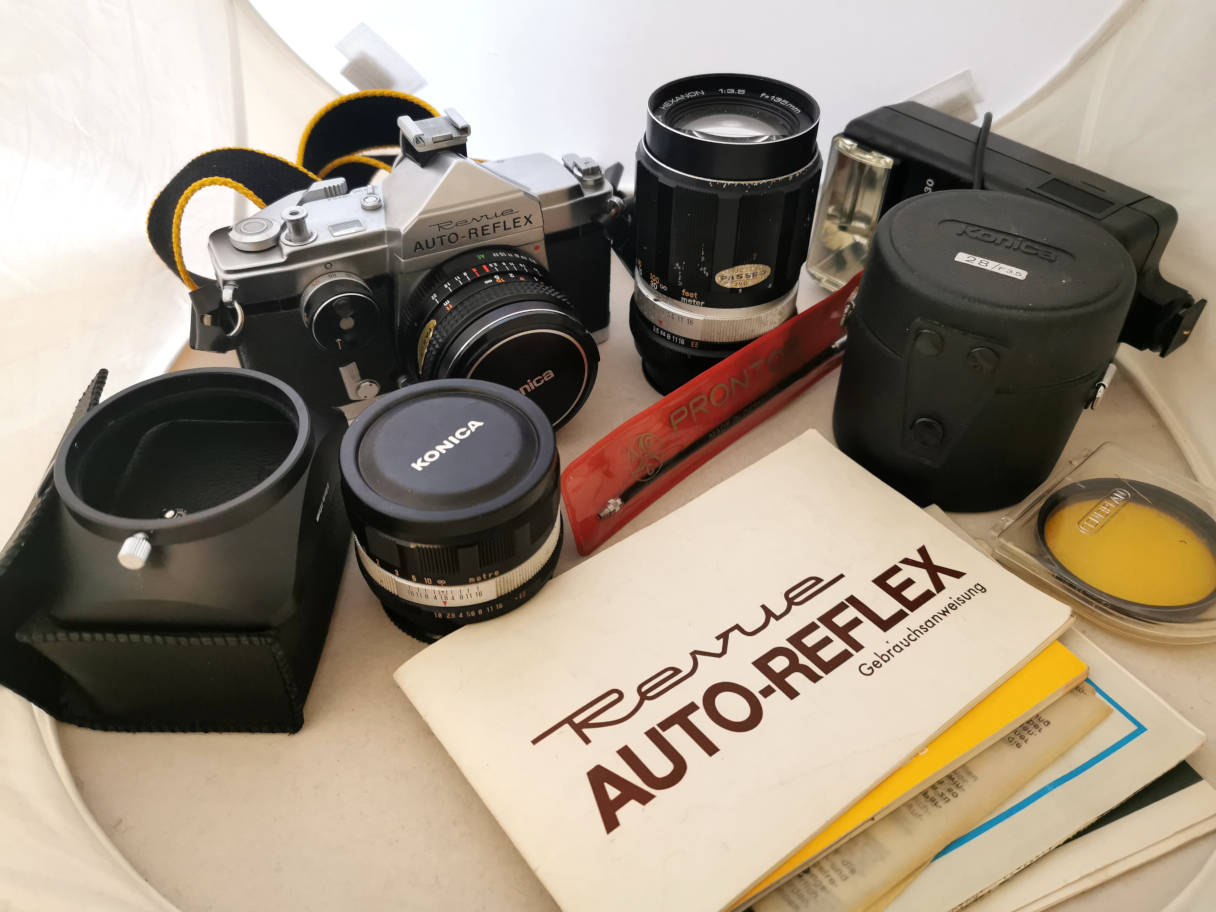
A nice set: Camera, 3 lenses, strap, accesories, German instructions and more papers.
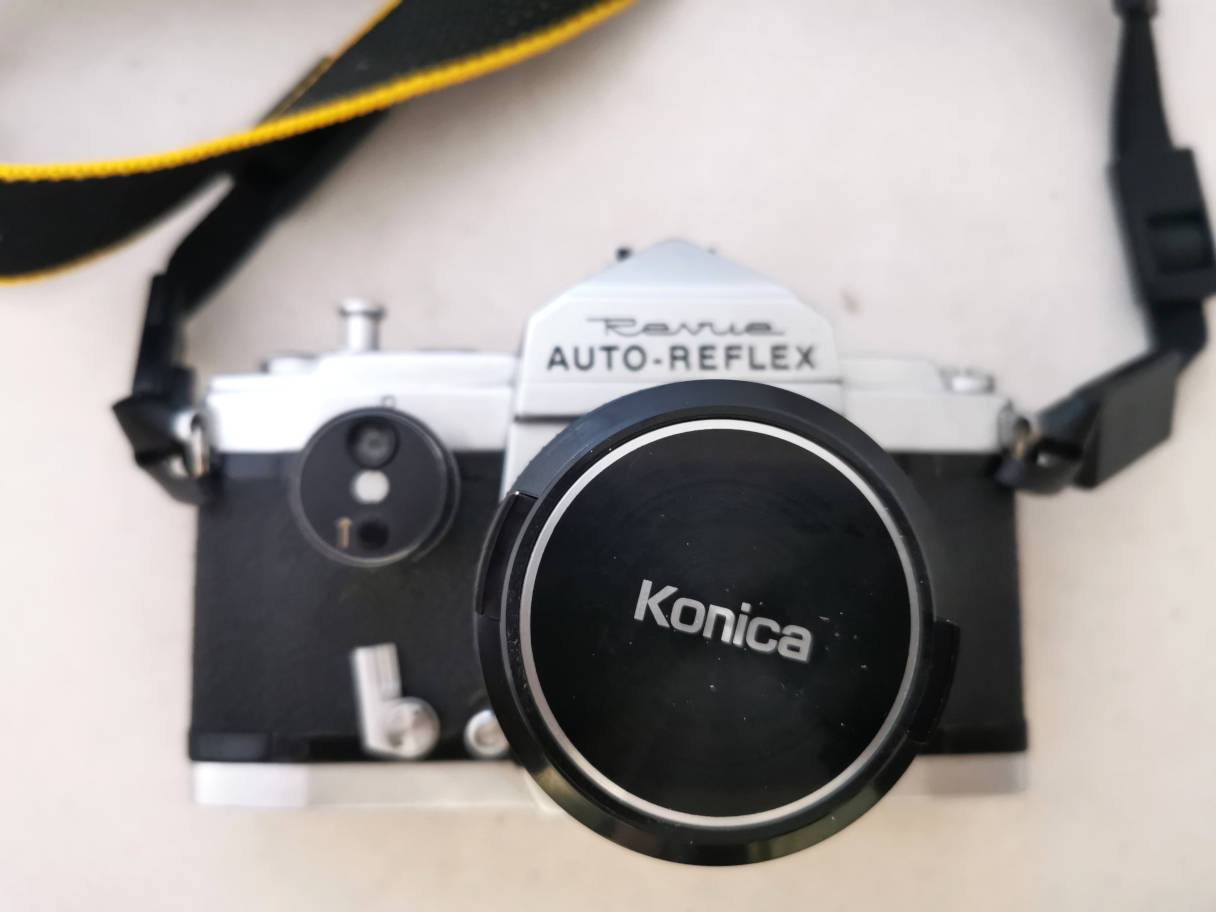
Except the camera housing, all other things are branded Konica.

Camera front. A 28mm lens, a good choice for the half frame format.
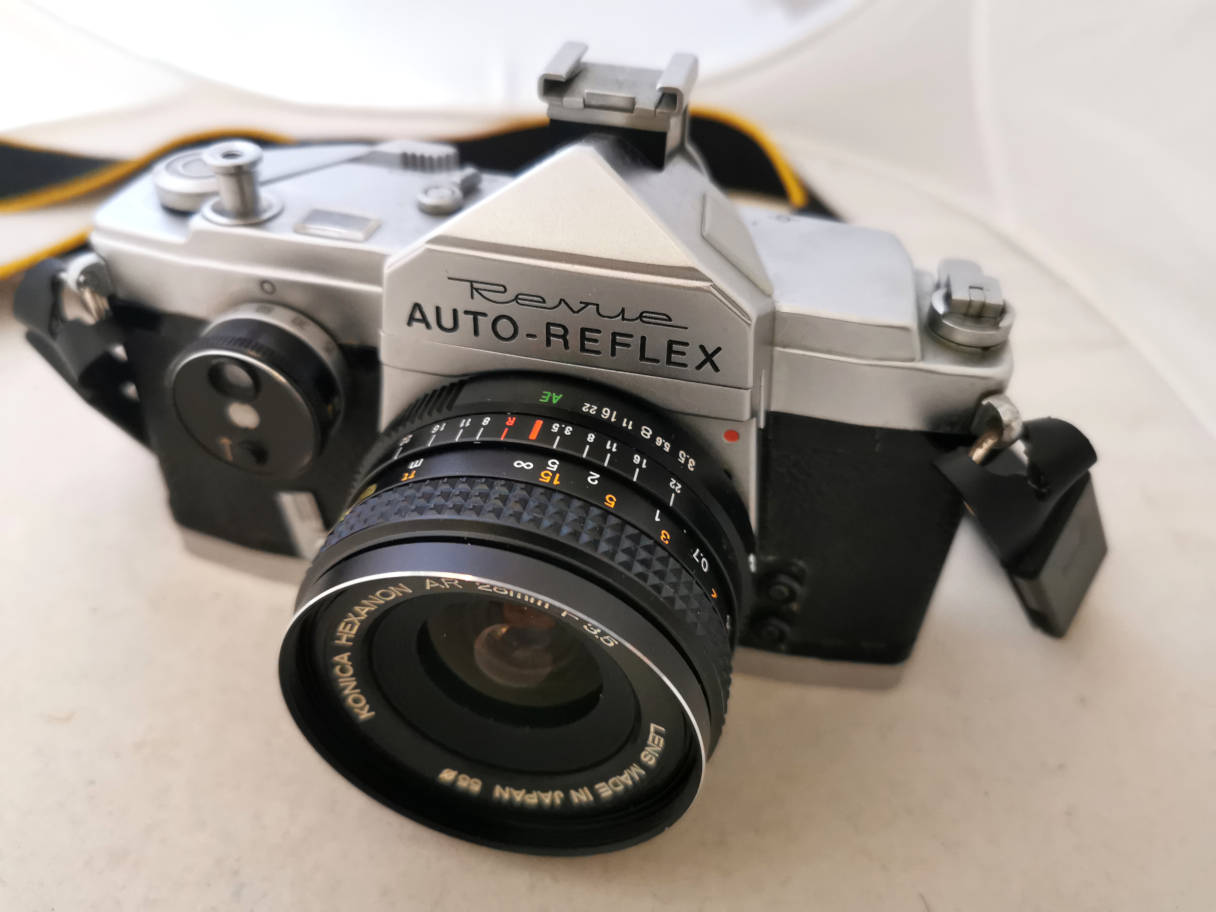
Camera front. To the left: meter.

Speed selctor by turning the meter housing.

ISO setting. To change, lift the upper part and turn. Towards the
bottom: self-timer and depth of the field button (closes the aperture).
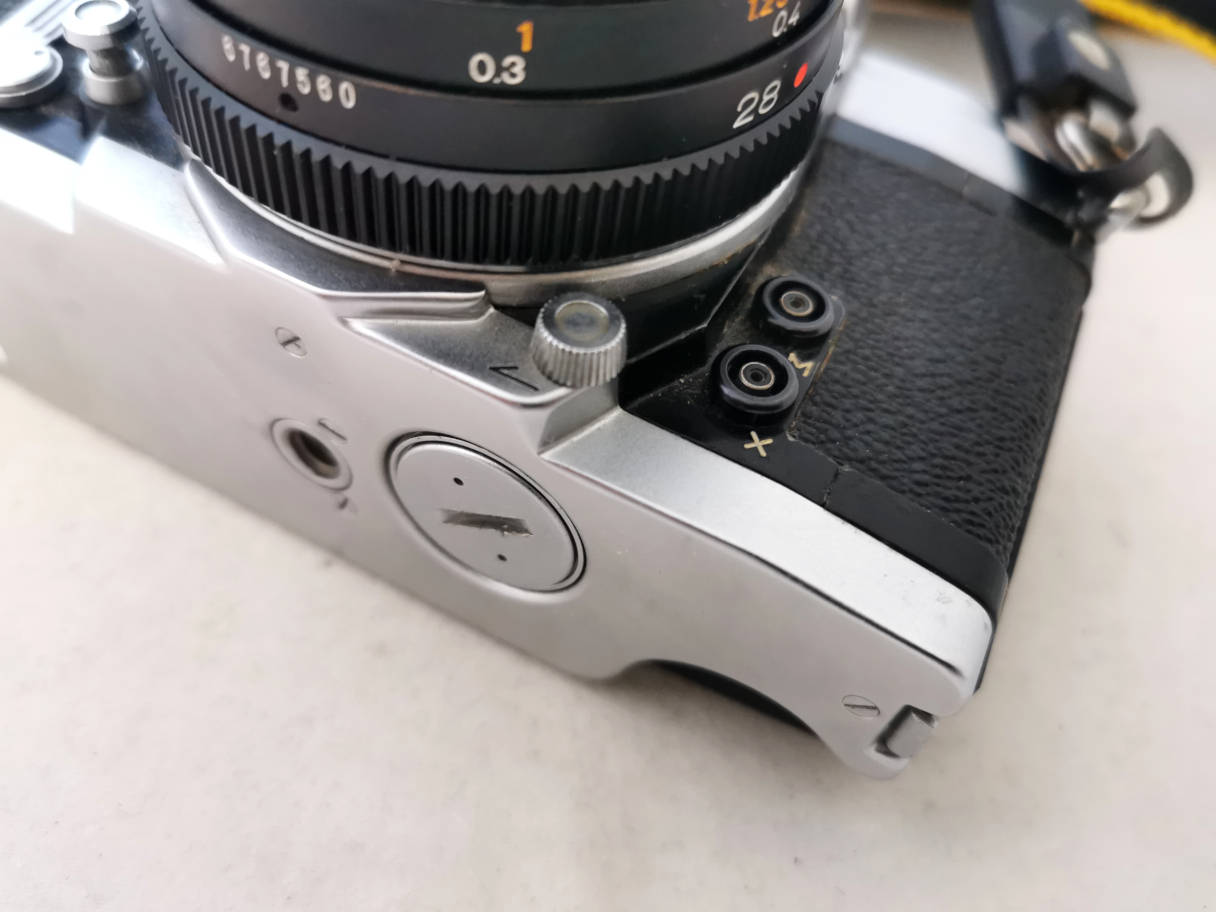
2 PC sockets and lens release.
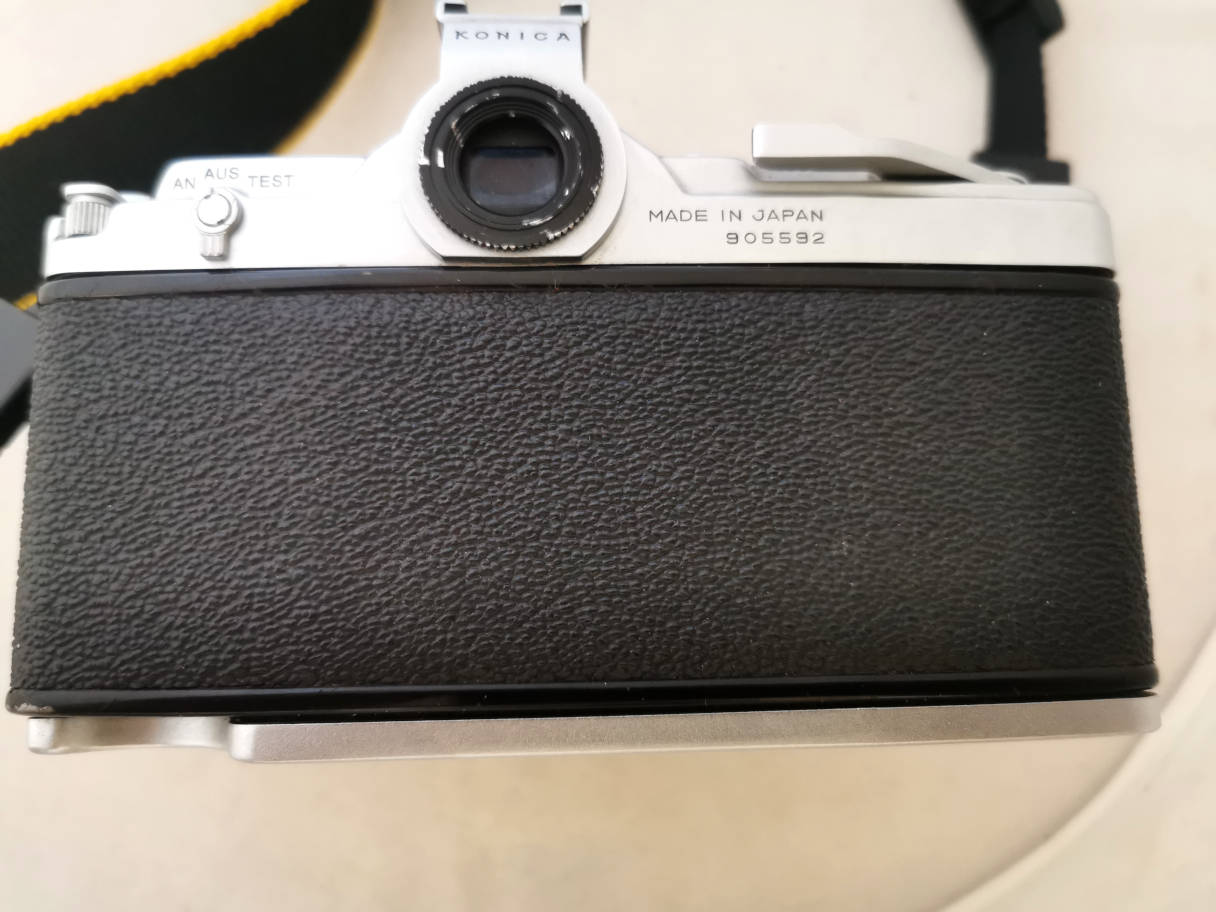
Camera
back. Viewer and advance lever. To the left of the finder: meter
switch, on, off and test. If in test position the needle rises above a
mark, power is fine. You have to get familiar with the switch. If you
forget to put it back to off, the battery drains. If you move it to
test by error, it shows a good exposure, you fire and waste a photo.
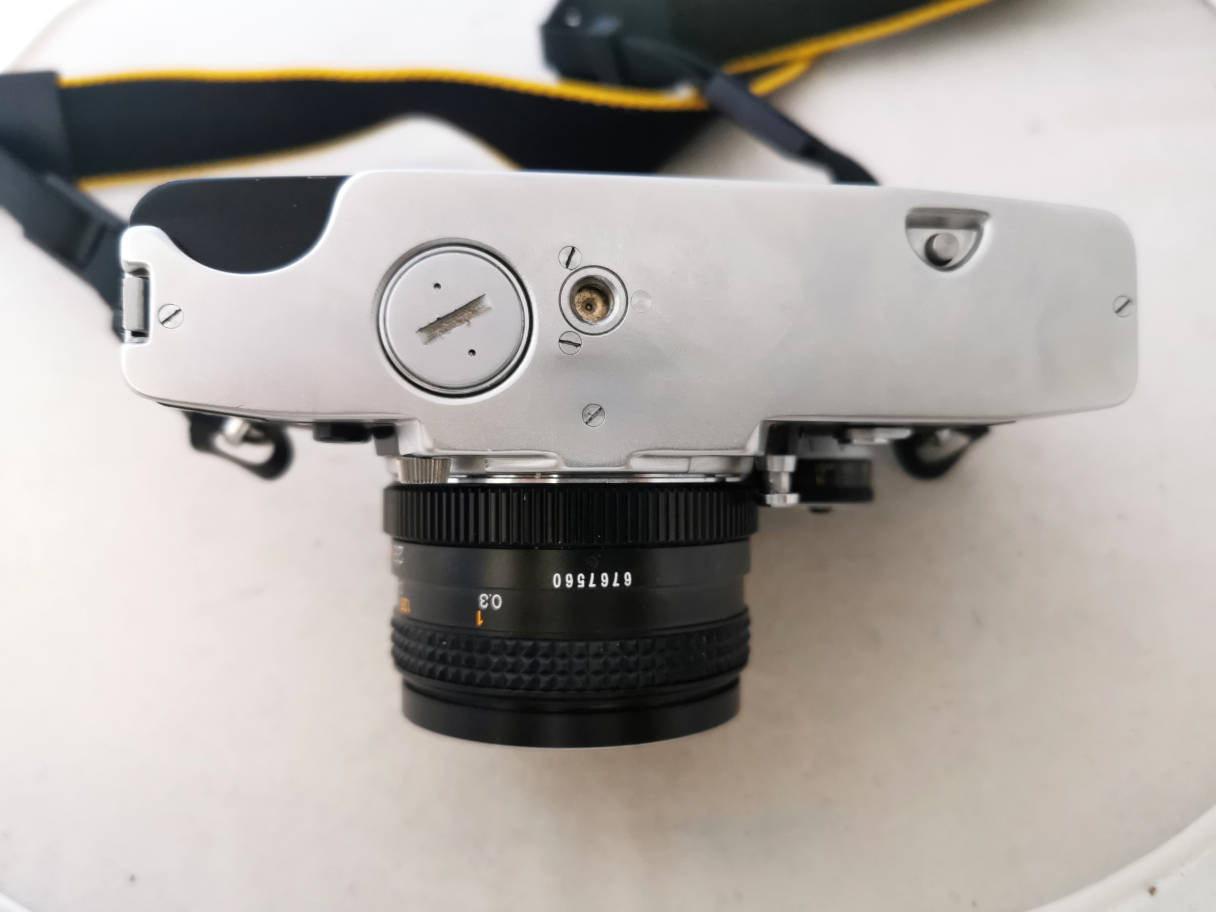
Camera
bottom. Rewind release, tripod socket. Battery
compartment, takes a PX625 mercury battery. There are replacements
available. And there are loads of discussions about it. See end of the page.
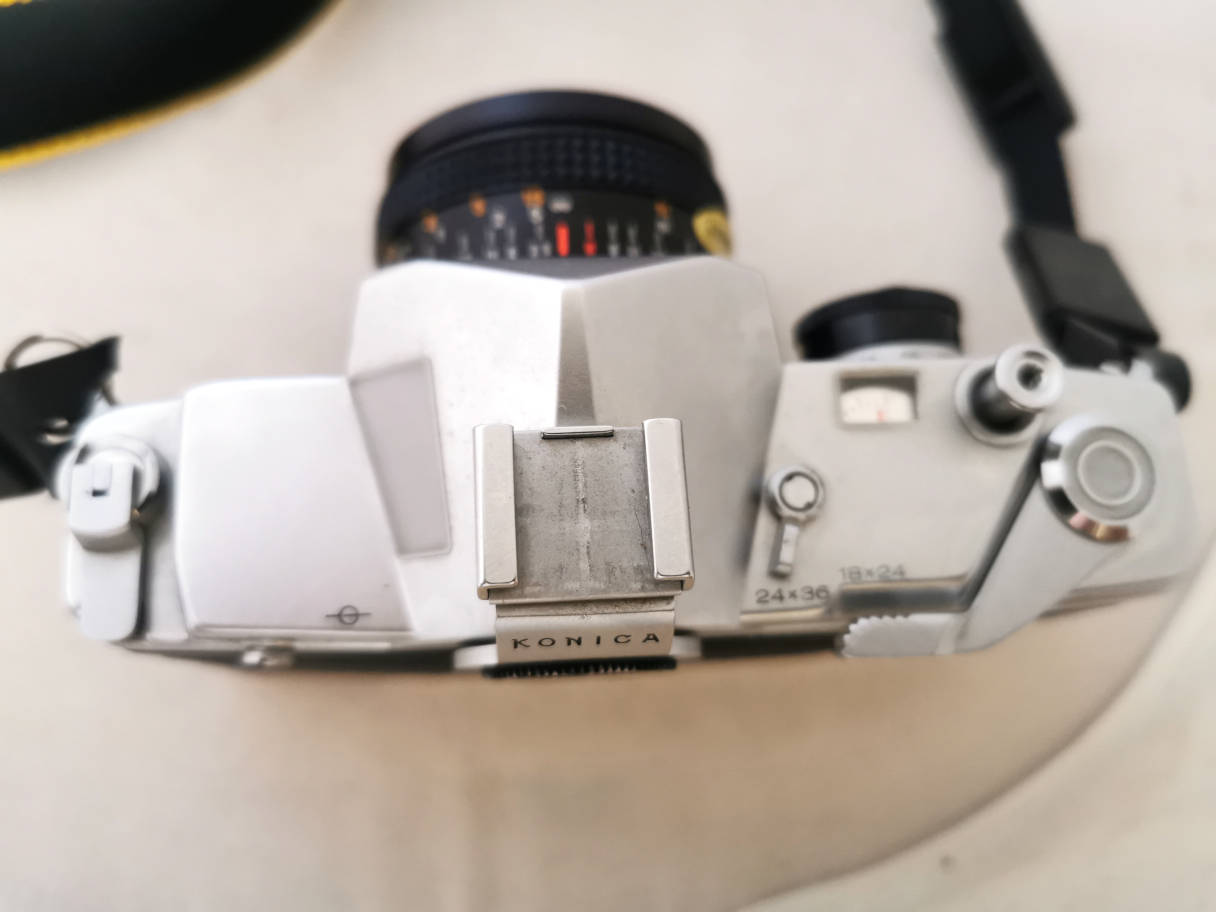
Seen
from above. Rewind, accessory shoe, format setting lever,
shutter release, film counter and film advance.
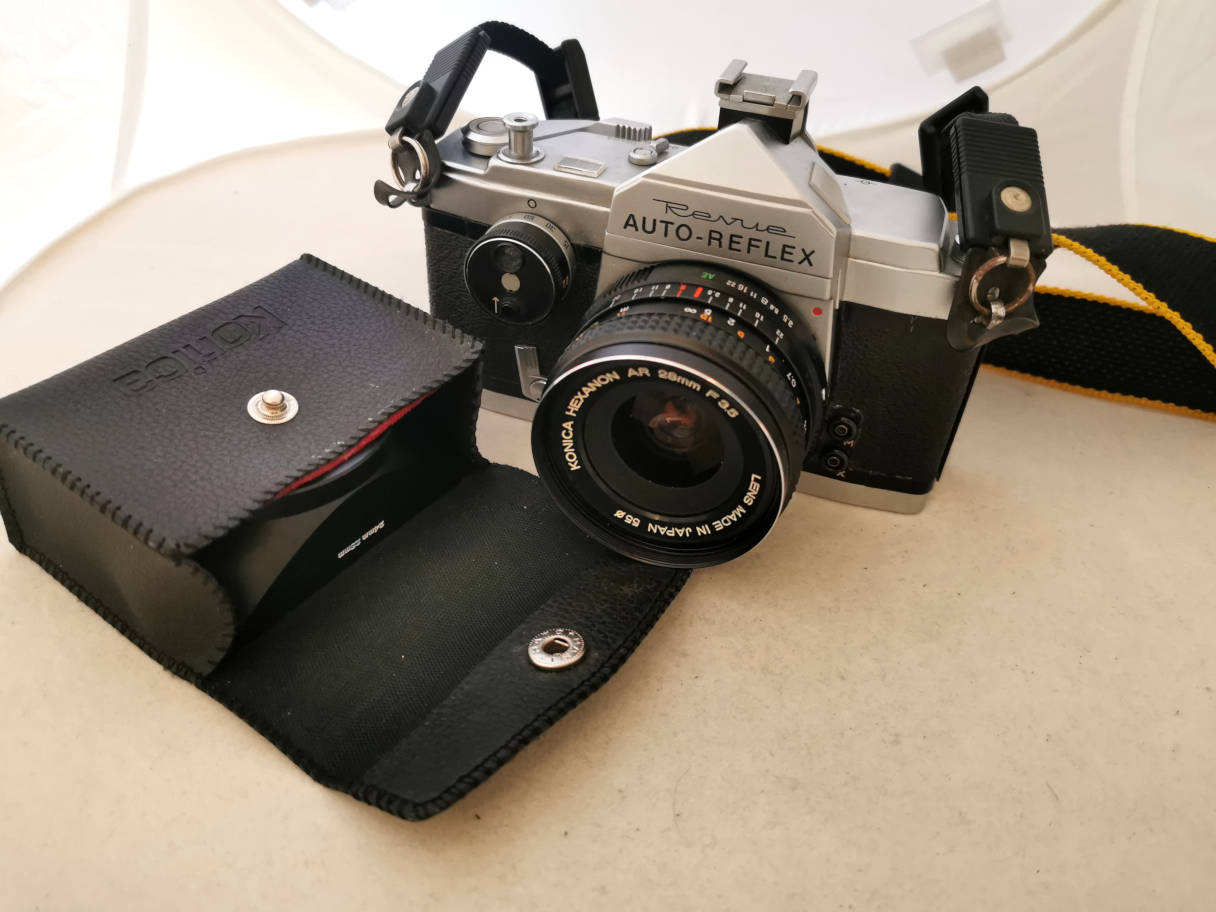
28mm lens and its shade.
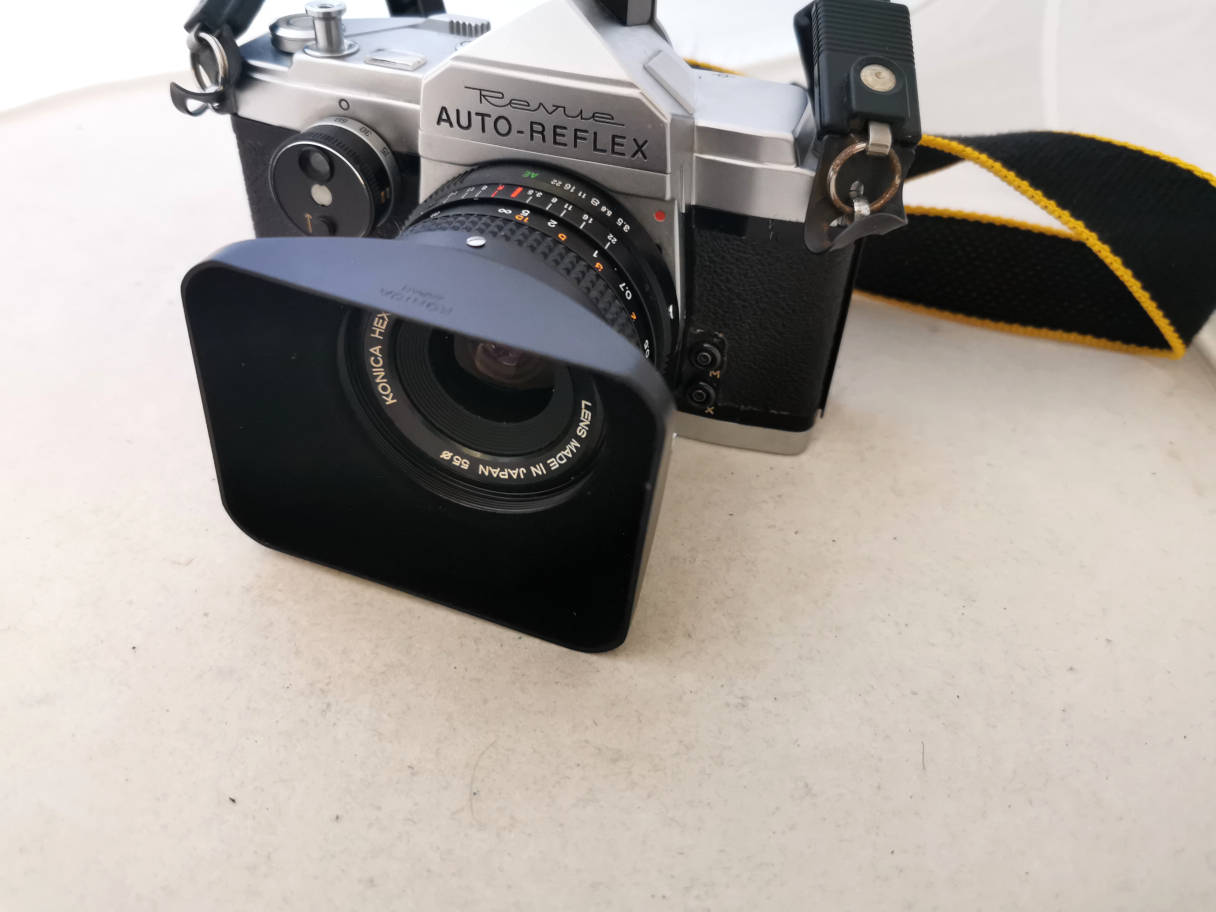
Shade mounted.
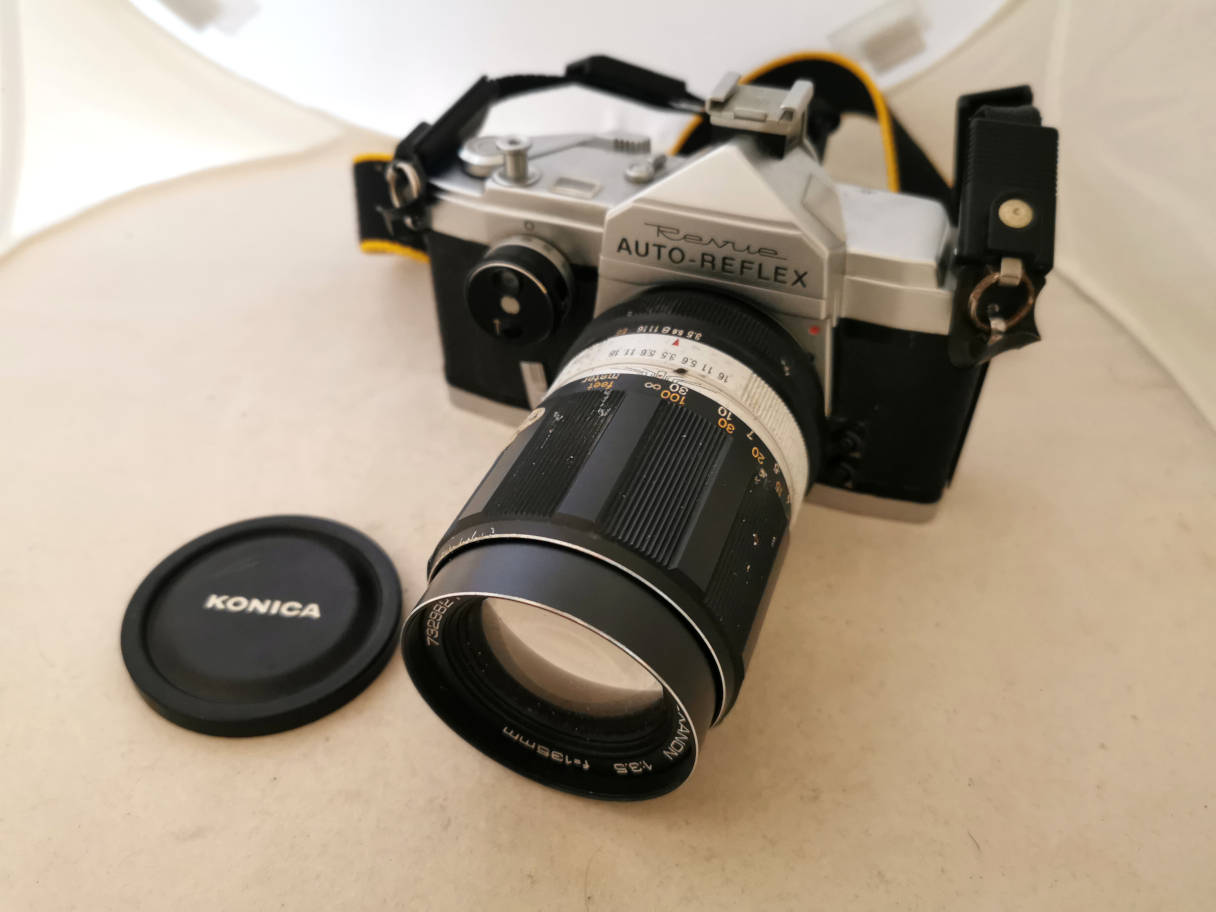
135mm lens

Lens front.

52mm F 1.8 standard lens.
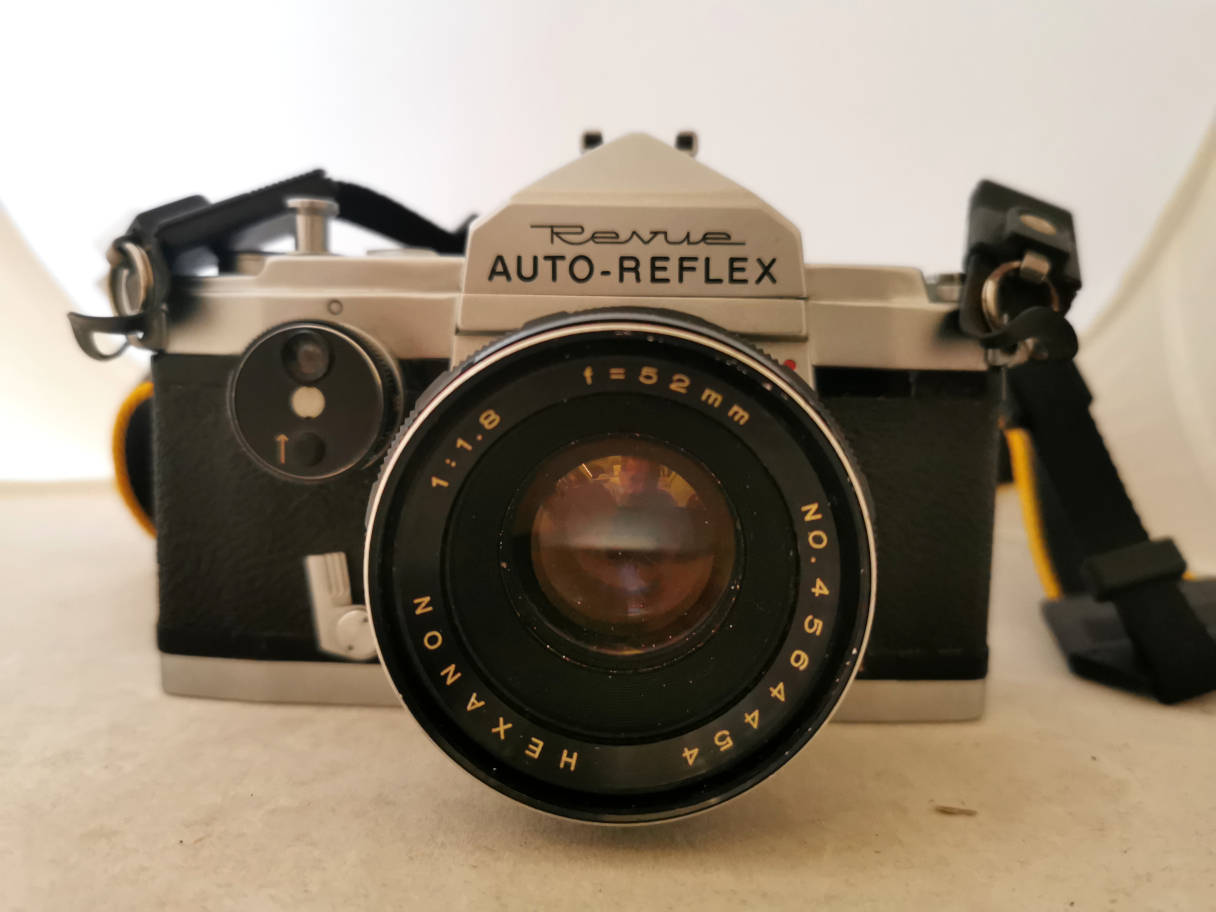
Lens front.
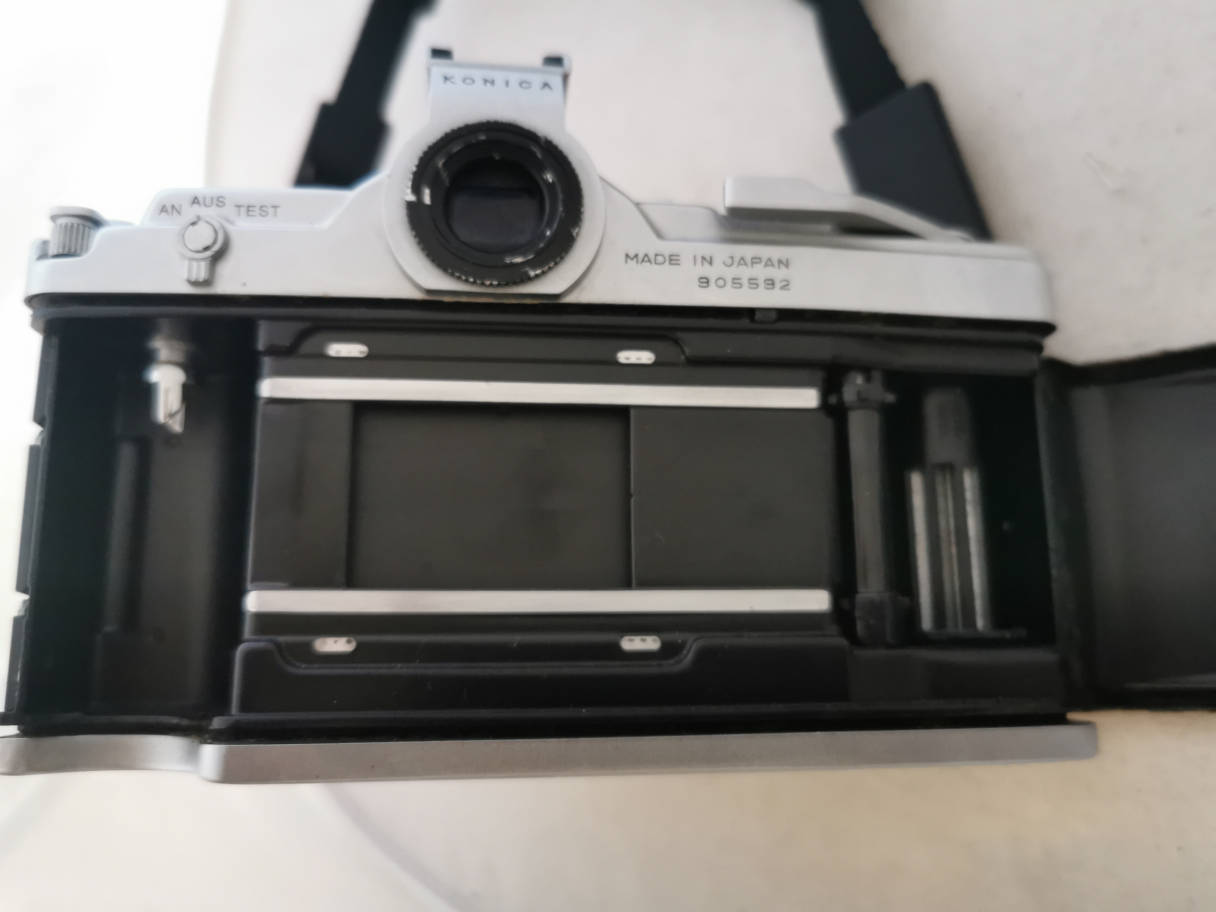
Film compartment.

Film compartment with half format setting. Switching the lever also sets indication marks in the finder.
This is a very nice SLR camera with very good lenses. I bought it
for its half frame possibility. It's the only 135 film SLR to offer a
format choice that I know of. It
still works nicely after so many years. Seen today's film prices, half
frames are sought after. This led to high prices for this specific
model that had been overlooked for many years. In any case: A nice buy.
There is a lot of discussion about the battery. I do not use slide film
except for stereo cameras. Modern negative film is easy within 1 or 2
apertures. So no problem with a slightly used U 625 battery. I have nevertheless ordered
an adapter to 1.3 V.
So let us look at adapting the camera to the 1.3 V of the mercury
batteries that are no longer available. With my Konica there is a nearly 2
stop difference between a fresh U 625 1.55 V battery and a 1.3 V
battery. That's quite a lot. But it works well with a used one of 1.45 V. No
difference here and it lasts some months. Funny detail: my Pen D3 from
the same period has obviously a completely different circuit. The meter
only works if you push a button, so no battery drain, and there is no
difference between 1.3 V and 1.55 V. The meter shows the same values. The Pen FT however shows a full 2 stop difference.
There are Weincell zinc/air batteries, the size of the original 625
battery, which are quite expensive. Zinc/air batteries are sold sealed
(there are tiny, tiny holes which let air in to make it function), once
you peel off the seal the reaction starts and in most cases the battery
will only last a few weeks. However these batteries perform like
mercury batteries, they stay at the same level for a long period and
then suddenly fade. They need some minutes to work well after
unsealing. Depending on your voltage meter, they show a higher voltage,
but this goes down once they are in the circuit.
There are hearing aid zinc/air batteries 675 size (which is smaller).
These cost next to nothing because they are produced in large
quantities. So adapting these seems to be the best solution.

My set consists of 2 rubber rings and a pack of 6 hearing aid 675 batteries + instruction sheet.

The seal, to be pulled off.

The rubber ring to center the smaller battery. The picture shows the battery compartment of my Pen FT.

Ring and battery. If you look closely, you can see 4 tiny, tiny holes on the axis of the + sign.
This really seems to be the easiest reliable solution. FYI: If you
don't have the rings, the batteries work nevertheless. Just put them
into the middle of the compartment and screw the lid. And another: SR44
batteries are the size of 675 batteries. So these work as well in case
of. But they should not be new ones because of the voltage.





















